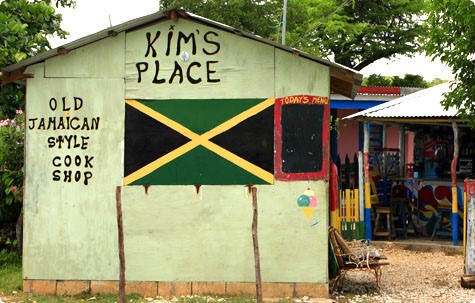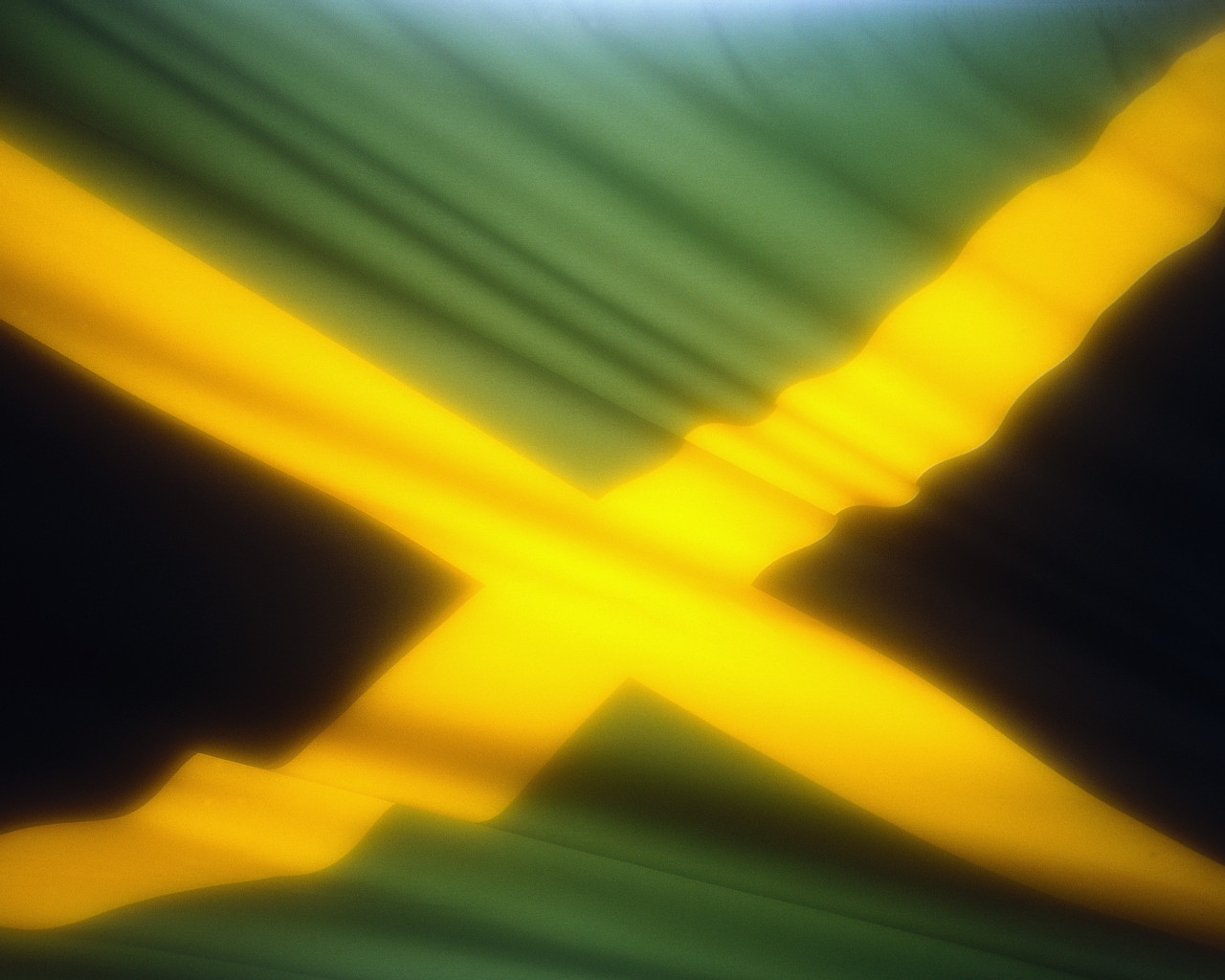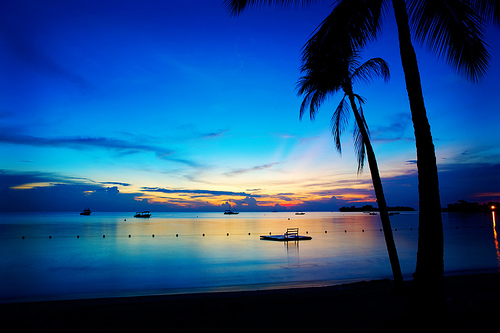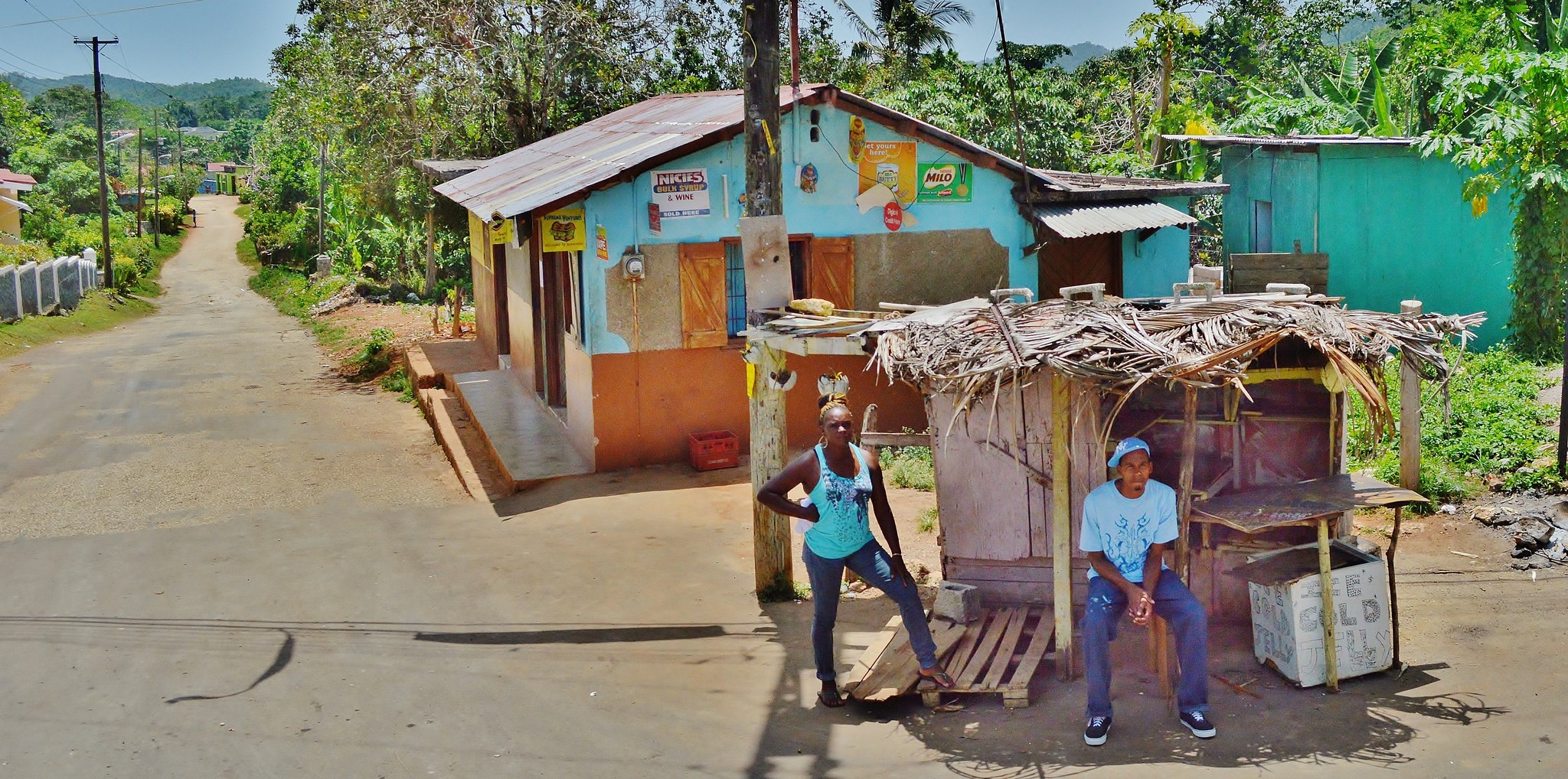The Evolution of  Jamaica to Today
Jamaica to Today
Jamaica is an island in the Caribbean that was discovered by Christopher Columbus in 1494 and was settled by the Spanish in the early 16th Century. The earliest known inhabitants, the Taino, were gradually exterminated and replaces by African slaves. In 1655, the English took over the island and created a plantation economy based on soft commodities such as coffee, cocoa and sugar. In 1834, they abolished slavery and free approximately 250,000 slaves who later became small farmers.
As the country grew, the people gradually increased its independence from Britain. By 1958, Jamaica joined other British Caribbean colonies in forming the Federation of the West Indies. And later in 1962, Jamaica withdrew from this federation and from Britain. Since its independence from Britain, power in Jamaica has alternated between the social-democratic People's National Party and the conservative Jamaica Labour Party. In the 1970s, the economic conditions in Jamaica caused an uproar of violence as gangs associated with the government evolved into powerful organized crime networks involved in international drug smuggling and money laundering. While elections have often been marred by violence, their results have always been accepted and, on the whole, political institutions have managed to retain their legitimacy. But political stability has not turned into social and economic harmony.
Today, violent crimes, poverty and drug trafficking still pose significant challenges to the government. The government has at times deployed army units to suppress violent unrest. There were more than 1,300 reported murders in 2006 and there have been accusations of extrajudicial killings by law enforcers. The murder rate declined in 2010. The police have secured outside help to deal with what is one of the world's highest murder rates alongside South Africa and Colombia. Contrasting with the luxury tourist resorts are densely-populated and impoverished ghettos.
Jamaican's Fourteen Parishes

Administratively, Jamaica is divided into fourteen parishes. They are grouped into three historic counties, which have no administrative relevance (listed below).
Cornwall has 5 — St. Elizabeth, Trelawny, St. James, Hanover and Westmoreland
Middlesex has 5 — St. Catherine, St. Mary, Clarendon, St. Ann and Manchester
Surrey has 4 — Kingston, St. Andrew, St. Thomas and Portland
Each parish has its own parish council which is given limited powers. Each parish has a capital town.
St. Elizabeth:
Named in honor of Elizabeth, wife of a former Governor. St. Elizabeth is known for its farming activities and is called the "feeding basket" of Jamaica. It is Jamaica’s second largest parish. St. Elizabeth is a major producer of bauxite. There are two sugar factories in the parish and a number of crops (among them cassava, peas, pimento, tobacco). This parish is also the producer of livestock. The capital town is Black River.
Trelawny:
Named after a former Governor, St. William Trelawny. Trelawny is known for its sugar estates. Rum and sugar are Trelawny's main products. The capital town is Falmouth.
St. James:
Named after the Duke of York who became James II. St. James is known as the second city of Jamaica. Montego Bay is the capital town. Popularly known as “Mo Bay” in Jamaica, it is one of the most famous tourist destinations internationally.
Hanover:
Named after the English Monarch, George I, from the House of Hanover in Germany. Hanover is the smallest parish in the island. Agriculture is its main product. The capital Town is Lucea.
Westmoreland:
Possibly named because it is the most westernmost parish in the island. Westmoreland is Jamaica’s eighth largest parish. The parish depends on sugar cane for employment. Negril is within Westmoreland. Negril has some of the world’s best beaches and is noted for its white sands. Negril is one of Jamaica’s main tourist destinations. The capital town is Savanna-la-mar.
St. Catherine:
Named after Queen Katherine, Charles II’s Queen, the name was changed to "Catherine". St. Catherine is one of Jamaica's largest parishes and is next to Kingston as an industrial center. The largest salt producing plant in the Caribbean and the Caymanas Park horse-racing track are located in this parish. The capital town is Spanish Town.
St. Mary:
One of Jamaica’s smallest parishes. St. Mary has the largest number of (East) Indians in Jamaica. It is the parish with the most historic buildings, monuments and ruins. St. Mary has several Great Houses. It was named after its capital Puerto Santa Maria. It was one of the first sections of the island to be occupied by the Spanish. It produces a large variety of agricultural produce such as bananas, coconut, coffee and breadfruit. The capital town is Port Maria.
Clarendon:
Clarendon was named in honor of St. Edward Hyde, Earl of Clarendon. An extensive amount of bauxite can be found in Clarendon. It is the location of the famous Milk River Bath and is Jamaica’s 3rd largest parish. The capital town is May Pen.
St. Ann:
Named after Ann Hyde, Wife of King James II of England. It is the largest parish in Jamaica and is also known as the "Garden Parish" because of its beautiful flowers. It is the birthplace of their national hero, The Right Excellent Marcus Mosiah Garvey and Reggae singer Bob Marley. St. Ann is one of the major tourist destinations in Jamaica. The famous Dunn’s River Falls and a number of popular beaches are situated in St. Ann. Ocho Rios, popularly known as "Ochie" to the locals, is a town in St. Ann. Ocho Rios is the second major tourist town on the north coast. The capital town is St. Ann’s Bay.
Manchester:
Manchester was named in honor of the Duke of Manchester, the then Governor of Jamaica. It is Jamaica's sixth largest parish. The area is mostly mountainous and the climate is usually cool. A number of Jamaica's businesses were started in Mandeville and it is the hub of the bauxite mining industry. One of the oldest hotels in the Caribbean, the Mandeville Hotel, is located in this parish. Citrus (oranges, ortaniques and grapefruit) are grown here in abundance. The capital town is Mandeville.
Kingston:
This is the capital of Jamaica and also the largest city in Jamaica. It is the centre of commerce for the Island. Two airports, The Norman Manley International Airport and Tinson Pen (smaller and more domestic) are located in Kingston. The capital town is Kingston.
St. Andrew:
The University of the West Indies and The College of Arts, Science and Technology (now known as The University of Technology) are located in this parish. The capital town is Half-Way-Tree.
The local government for the parishes of Kingston and St. Andrew were merged to form the Kingston and St. Andrew Corporation (KSAC).
Important places that are located in St. Andrew are the Governor General’s residence at King’s House, the Prime Minister’s residence at Jamaica House, the National Stadium, Sabina Park (cricket) and the Bob Marley Museum.
St. Thomas:
Might be named after Thomas, Lord Windsor, Governor of Jamaica in 1662. The famous Morant Bay Rebellion took place in this parish. There are many factories in St. Thomas and sugar and bananas are their main export crops. The capital town is Morant Bay.
Portland:
Named after the Duke of Portland, Governor of Jamaica in 1723, Portland is known for its agricultural products. Breadfruits, bananas, coffee, coconuts and ackees are among some of the products. Portland has been known to be the host for the rich and famous many of whom own property there. The world famous Blue Lagoon is located in this parish. There is also rafting on the River Grande. Portland is also famous for its jerked food - especially its jerk pork! (Note: "Jerk" food means spicy food) Port Antonio is the capital town.

Known for its strong sense of self identity expressed through its music, food and rich cultural mix, Jamaica's influence extends far beyond its shores. With celebrities such as the black nationalist Marcus Garvey and musician Bob Marley, Jamaicans are proud of their cultural and religious heritage. The island is the birthplace of Rastafarianism, a religious movement which has been adopted by groups around the world who venerate the former Ethiopian emperor Haile Selassie. Once regarded as a revolutionary threat, Rastafarianism became a cultural force, reflected in art and music. With its roots in the island's ska and rocksteady forms, reggae made Jamaica a leader in music, with Bob Marley as its most famous ambassador.
The Jamaican culture is closely tied to Jamaican politics. Some of this was noted when reggae music was used to negotiate a truce between the two major political parties - the Jamaica Labour Party (JLP) and the People's National Party (PNP). Bob Marley was asked by the leaders of the two major political parties to perform at a truce-making concert held on April 22, 1978. During the concert, Bob Marley encouraged Edward Seaga (JLP) and the late Michael Manley (PNP) to shake hands on stage.
Family and Social Circle
The Family
The Jamaican family includes a close-knit web of aunts, uncles, cousins and grandparents. Families are close and provide both emotional and economic support to its members. The family is the most important group a person belongs to, and as such, it the group with whom a person spends most of his/her time developing and maintaining cordial relations.
Trust
Jamaicans have a healthy distrust of those in authority and prefer to put their faith in those they know well, such as their extended family and close friends who are treated as if they were family.
This can be seen in the fact that many still prefer to form a "partner" with friends and family rather than go to a bank to secure a loan. A partner is a financial arrangement between friends and neighbors. Each person in the group agrees to contribute a set amount into the partner for a specific number of weeks. Accumulated funds are used to make down payments for large purchases such as buying a house or a business.
The basic requirement of the partner is trust. To become a member of the elite group, a person must be recommended by a friend or relative.
Religion
Religion is fundamental to Jamaican life, which can be seen in the references to Biblical events in everyday speech. Jamaica may have the highest per-capita concentration of churches in the world - and there’s a bar across the street from every church!
Rastafarianism
Rastafarians believe they are one of the lost tribes of Israel who were sold into slavery and taken to Babylon (Jamaica) and that they must return to Zion, which they hold to be Ethiopia. The movement does not have organized congregations, it does not have a paid clergy, and it doesn't have a written doctrine.
There are three types of Rastafarians in Jamaica:
1. Members of the Bobo Shanti order wear long robes and tightly wrapped turbans. They function like an independent nation within Jamaica with their own constitution. Their lifestyle closely emulates those of the Old Testament Jewish Mosaic Law, which includes the observation of the Sabbath from sundown on Friday to sundown on Saturday, hygiene laws, and special greetings among themselves.
2. Members of the Nyahbinghi sect focus mainly on Emperor Haile Selassie and they proclaim that he is the incarnation of the Supreme deity. They push for their repatriation to Ethiopia, from where they believe all black people came. Ethiopia plays a major role in this sect.
3. The Twelve Tribes was founded in 1968 by Dr. Vernon 'Prophet Gad' Carrington and is the most liberal of the Rastafarian orders. Members are allowed to worship in a church of their choosing or within the privacy of their house. They consider themselves the direct descendants of the 12 Sons of David.
Life in Jamaica 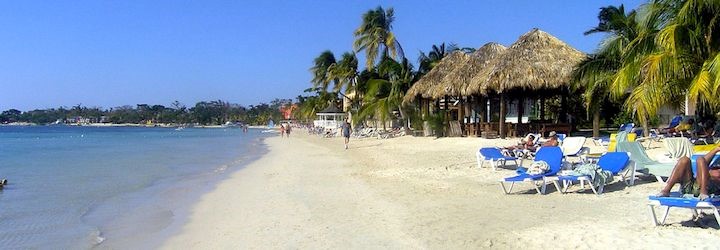
Many of the people in Jamaica make their livings off of the strong tourism in Jamaica. People travel from all over the world to visit the exotic beaches along the coastlines. They great visitors with smiling faces and quirky Jamaican quotes, making them feel welcome in their hometowns. Whether you arrive on one of the many cruise ships that stop in the ports or you are vacationing in one of the resorts, the people are the same…eager and happy. But as a tourist, when you travel away from the tourist areas to the towns, the homes are nothing more than shacks and poorly built buildings. "Don’t worry mon" and "Everything will be alright" are coined Jamaican quotes that reflect the culture of these people.
|
Drive virtually anywhere in Jamaica and you will notice a variety of shops and bars on the inside of every road. The entrepreneurial spirit of Jamaicans is alive and well as a closer look into any one of these establishments will attest. |
The shop will carry an assortment of items that everyone needs - this is a convenience store - you may find soaps, cereals, beverages, eggs, bread, vegetables, canned items, and almost certainly prepaid mobile phone credit. The bars (affectionately known as rum shops) serve as local meeting spots just as they might if they were transplanted into any other country in the world. The typical menu is generally basic so if you order a beer you’ll be given a Red Stripe - your other options will include rum and stouts but a glass of wine or fancy cocktail is out of the question.
